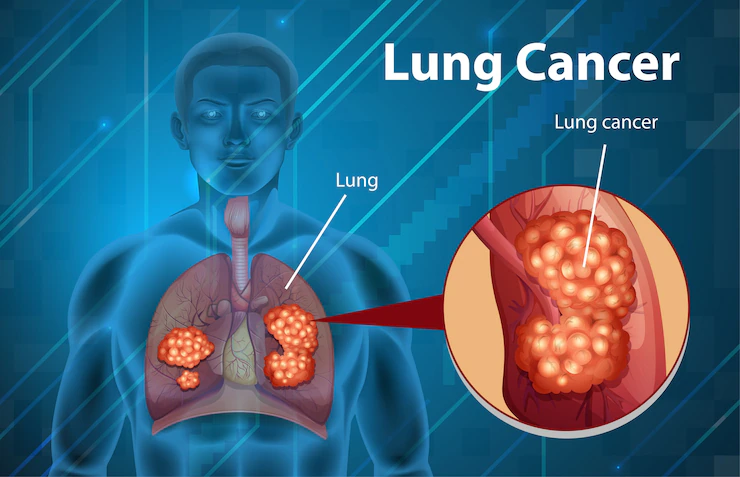Lung Cancer: Causes, Symptoms, Diagnosis & Treatment

Lung Cancer: Causes, Symptoms, Diagnosis & Treatment
Lung cancer is a type of cancer that starts in the lungs. It’s one of the most common cancers worldwide and can be very serious. But knowing about its causes, symptoms, diagnosis, and treatment can help catch it early and improve chances of successful treatment.
Causes of Lung Cancer
The main cause of lung cancer is smoking. Cigarette smoke has many harmful chemicals that can damage the cells in your lungs and lead to cancer. Even if you don’t smoke yourself, being around secondhand smoke can increase your risk.
Other causes of lung cancer include:
- Exposure to radon: Radon is a naturally occurring gas that can seep into homes and buildings. Breathing in radon gas over time can raise your risk of lung cancer.
- Exposure to certain chemicals or pollutants: Being exposed to substances like asbestos, arsenic, or certain chemicals used in mining or manufacturing can increase your risk of lung cancer.
- Family history: If someone in your family has had lung cancer, you might be at higher risk too.

Symptoms of Lung Cancer
Lung cancer might not cause symptoms in its early stages, but as it grows, you might notice:
- Persistent cough: A cough that doesn’t go away or gets worse over time.
- Chest pain: Pain in your chest, shoulder, or back that doesn’t go away with treatment.
- Shortness of breath: Feeling like you can’t catch your breath, even when you haven’t been exerting yourself.
- Coughing up blood: Blood in your phlegm when you cough.
- Hoarseness or wheezing: Changes in your voice or noisy breathing.
- Unexplained weight loss: Losing weight without trying can be a sign of lung cancer.
Diagnosis of Lung Cancer
If you have symptoms of lung cancer or are at high risk, your doctor might do tests such as:
- Chest X-ray: This can show abnormal areas in your lungs that might be cancerous.
- CT scan: This provides more detailed images of your lungs and can help find smaller tumors.
- Biopsy: Taking a small sample of tissue from your lungs to look for cancer cells under a microscope.
- Bronchoscopy: A thin, flexible tube with a camera is inserted through your nose or mouth to look inside your lungs and take tissue samples.
Treatment of Lung Cancer
Treatment for lung cancer depends on the type and stage of the cancer, as well as your overall health. Common treatments include:
- Surgery: Removing the tumor or part of the lung where the cancer is located.
- Chemotherapy: Using drugs to kill cancer cells.
- Radiation therapy: Using high-energy rays to kill cancer cells.
- Targeted therapy: Using drugs that target specific abnormalities in cancer cells.
- Immunotherapy: Using drugs to help your immune system fight the cancer.
Conclusion
Lung cancer is a serious disease, but knowing the causes, symptoms, and treatment options can help catch it early and improve chances of successful treatment. If you have any concerns or notice symptoms, it’s important to see your doctor right away. Early detection and treatment can make a big difference in the outcome.



0 Comments